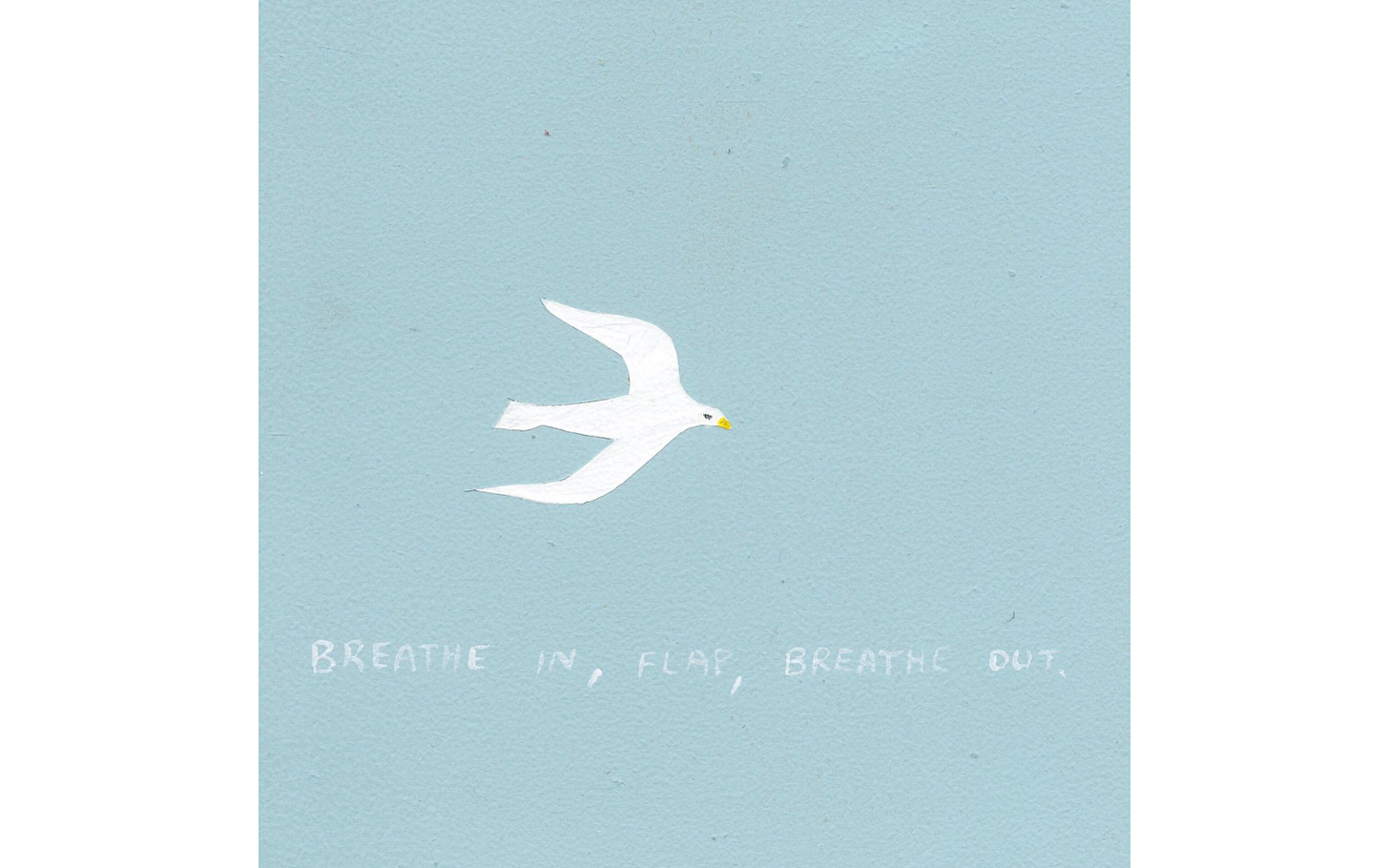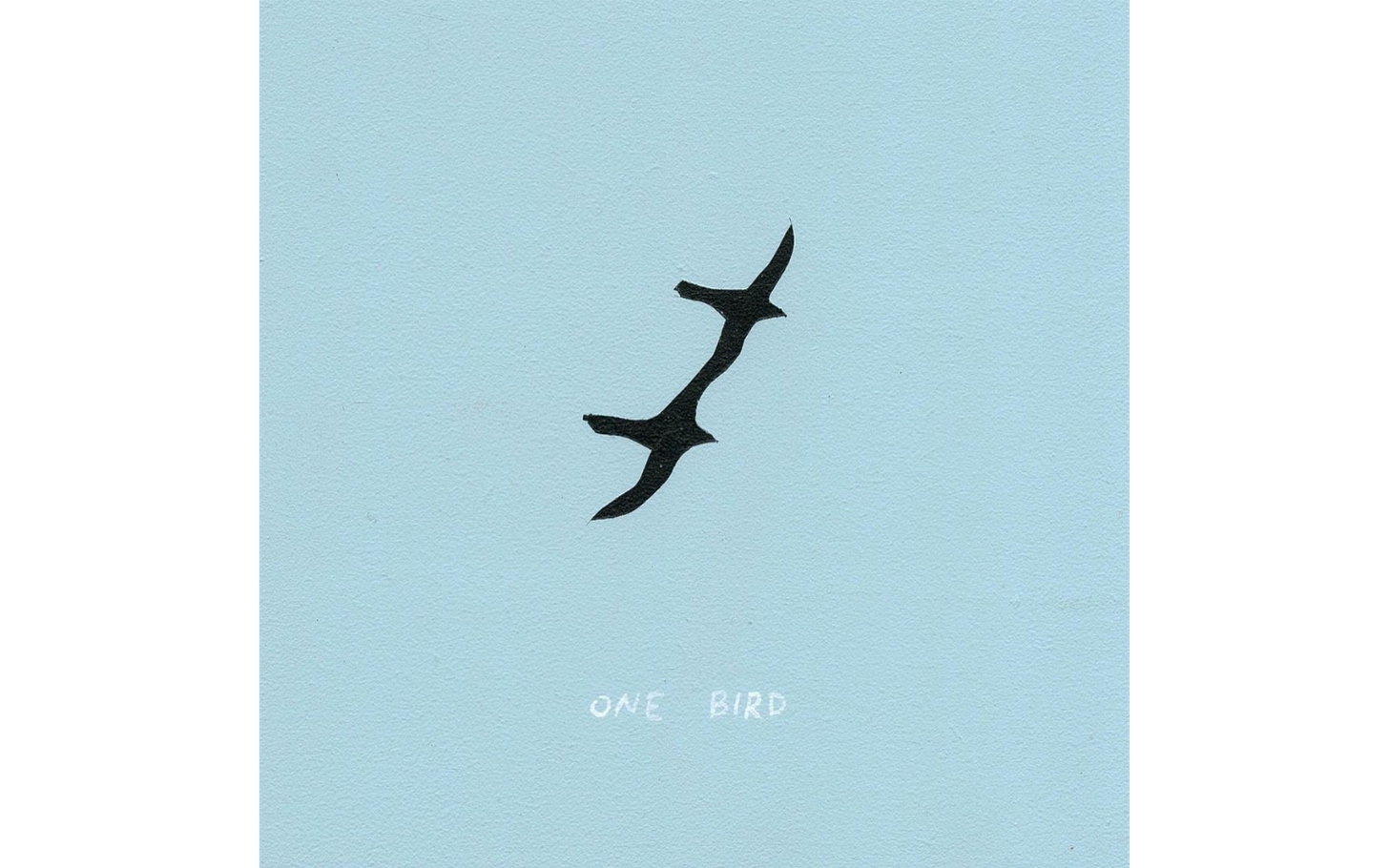Hello, and welcome back to The Ecstatic Review!
The last time we met we were on the road, getting a change of scenery and filling the well at the Eames House. It turns out that I needed even more of a well-filling scene change after a full September, because my October included a lot of intake: from the Yellow Conference to the Norton Simon, from seeing shows to being in shows, from books and poetry to many more words shared in conversation.
And of course there’s been a whole lot to take in over the past month beyond all of that, from the war to the strike and everything in between. It’s all left me in a familiar place: having so much to say and wondering how to say it all. Which has led me to wonder if I need to adjust my containers of expression or adjust the way I’m filling them, or both.
And all of that wondering has brought me to the topic of birds.
Birds, yes. Stay with me.
Right before I wrote this introduction, I looked back at the last act of this newsletter show and reread the subtitle: “What do you need to fly?” I laughed as I realized I’d unwittingly yes-anded myself right into this act—which in its own way, suggests an answer. Or at least a helpful approach.
Vulfpeck is leading us in with “Birds of a Feather,” one of my favorite songs that just so happens to be about birds. Press play for a thoughtful and catchy take on the humbling journey of change; listen through for Antwaun Stanley’s impressively specific bird riffs:
HERE’S AN IDEA
Bird by bird
The second chapter in Anne Lamott’s book Bird by Bird: Some Instructions on Writing and Life—which I was somehow never assigned in my writing-filled educational experience, but maybe you were?—is called “Short Assignments.”
In it, Lamott writes: “Often when you sit down to write, what you have in mind is an autobiographical novel about your childhood, or a play about the immigrant experience, or a history of—oh, say—say women. But this is like trying to scale a glacier.”
She goes on to hilariously describe the panic-induced spiraling thoughts that inevitably and quickly set in. And then she shares that on her desk, she has a tiny picture frame to remind herself that “all I have to do is write down as much as I can see through a one-inch picture frame. This is all I have to bite off for the time being.”
Lamott then tells a story about her brother trying to write a report on birds when he was 10. He’d had three months to do it, but he’d put it off until the day before it was due. She writes:
…he was at the kitchen table close to tears, surrounded by binder paper and pencils and unopened books on birds, immobilized by the hugeness of the task ahead. Then my father sat down beside him, put his arm around my brother’s shoulder, and said, “Bird by bird, buddy. Just take it bird by bird.”

I have a special fondness for this story as a former kid with a speech impediment who couldn’t say my Rs, whose own brother enjoyed trying to get me to specifically say the word “bird.”
“Birrrrrrrrrrrrrrrrrrd!” he’d say.
“Buwwwwwwwwd!” I’d say back.
I also have a fondness for this story as someone with a rich history of biting off more than I can chew. Like just recently, when the events of the world inspired part of me to want to write my own version of War and Peace. I’m exaggerating of course, but my therapist wasn’t when she said: “You don’t have to rewrite War and Peace, Cate. You just have to shine your light.”
A helpful reminder for someone who began this very newsletter by making direct parallels to Shakespeare.
The thing is, for so much of my life shining my light felt like trying to wrangle 10,000 fireflies shouting complex ideas and big feelings at each other into a tiny jar. Or, to use Lamott’s metaphor, a whole flock of birds into a nest built for one or two. The truth is, I’m still working on it. I know that no one wants or needs me to rewrite War and Peace, or whatever my version of it is.1 But I also know that I’m not alone in feeling the urge to try.
I don’t think it’s a bad thing to feel that urge. Is it grandiose? If you want to be judgy about it, sure (and trust me: I’ve been plenty judgy about it to myself). I think it’s also a sign of being an empathetic human in conversation with an overwhelming world. A sign of desire, of interest, of an appetite for trying to make sense of our human experience, and trying to make the world better as much as we possibly can.
But we already know that without the right container to hold all of that—enough time, space, resources, sleep—it’s a quick road to overwhelm. And overexertion. And empathic distress.2 And not saying anything at all.
A bird-by-bird approach can be a saving grace. A way to acknowledge the existence of the whole flock while honoring our capacity to tend to it, one manageable but mighty frame at a time. That’s not only helpful in talking about the world, but in any topic that’s hard to scale. Like, for example, the topic of ourselves.3

It’s important to note that while going bird by bird may help lighten the lift, it’s still a lift. Like anything worth doing, it takes time and practice to get the hang of it. I’m suddenly thinking about the loons at Tofte Lake in Minnesota, where I got to spend a week developing new work a few years ago. Tofte Lake has its very own celebrity power couple in the form of two loons named Stanley and Ethel, who glide around the lake together with nonchalant grace. That is, until it’s time to fly.
When that time comes, each of them begins flapping their wings vigorously, without one ounce of nonchalance or grace. They flap hard and low to the water for so long that you fear they are going to collapse back in and not take off at all. And just when you think that they aren't going to make it and totally humiliate themselves in the process, they begin to lift into the sky.
Getting any bird into the air is a whole-bodied task. It would be an insult to Stanley and Ethel to pretend otherwise.

I’m still figuring out how to do that here at The Ecstatic Review, on top of a schedule filled with many other birds to support in flight. But I didn’t start this newsletter show because I thought it would be easy or I’d be perfect at it from the beginning. That would definitely be pretty grandiose, and also pretty boring. I started it to expand the conversation with you, and to practice what I preach on a regular basis—knowing full well that it would be an ongoing lesson in humility.
Because we all know that doing it for others is one bird. Doing it for yourself? A whole other bird entirely.
A friend of mine went to a talk by a Buddhist monk at the Zen Center in San Francisco, and someone in the audience asked how to practice humility.
“Ah, humility,” the monk said thoughtfully, followed by a long pause. And then he said: “Feet on the ground, one step at a time.”
In other words, bird by bird.
Or as a little kid hell-bent on scaling her own speech glacier would have said: “Buwwwwwwwwd!”
LET’S PRACTICE
There are all kinds of practical bird-by-bird applications when it comes to talking about ourselves and our work, with helpful benefits for us and for our audience. Here are a few examples:
When someone says, “Tell me about yourself”:
Sharing one illuminating snapshot instead of your whole life story is a lot less daunting, and it’s also a lot more engaging—it invites conversation, rather than making you feel like you’re giving a lecture on The History of [Your Name Here].When you’re giving a talk to a room full of people:
Making eye contact with one person at a time rather than scanning the whole room can calm your nerves and keep you present, and it actually helps you be more clearly heard by everyone.When putting together your portfolio:
Highlighting a few of your favorite projects in more depth than the rest of your body of work allows you to keep the focus on what you’re most proud of, and it saves your viewer from overwhelm.
Can you think of others? I’d love to hear them in the comments. By the way, if that first bullet point is especially challenging for you, you might want to hang out in the EV lab.
NOTE OF ENCOURAGEMENT
I'm guessing you might have read “Wild Geese” by Mary Oliver—arguably one of the most encouraging and well-known poems that references birds—maybe even many times. But have you heard Mary read it? I hadn’t, and I’m grateful to have found it while working on this week’s act:
Wishing you a week full of whatever you need as you move through it all, bird by bird.
P.S. As always, if you know someone who would enjoy The Ecstatic Review, please pass it along! All are welcome, and every voice makes this show that much fuller.
Well, actually I can give you a glimpse (and if you follow EV on Instagram you already got one): I was deep-diving head first into why the voice doesn’t work in times of distress. Which I think might be a great topic for a future dissertation, but not for this weekly non-dissertation.
I just recently began reading about empathic distress in Roshi Joan Halifax’s book Standing at the Edge. If you’ve been feeling on edge lately, I highly recommend it (and I’m only about a third of the way through). You can also hear Halifax talking about this concept in an episode of the On Being podcast called “Finding Buoyancy Amidst Despair.” The episode page I’ve linked also includes a guided meditation on grief.
To be clear: My particular expertise lies in the latter, not the former. And I’ll always be in a state of learning on both. Stay suspicious of anyone who tells you otherwise.





Once again, this is an astute perspective on long-term work and a poetic way to give yourself grace without letting you all the way off the hook. My kind of advice, in other words.
Everything you share feels like a warm and invigorating hug. Thank you, Cate. So happy you're back. 🐤 🫶🏼